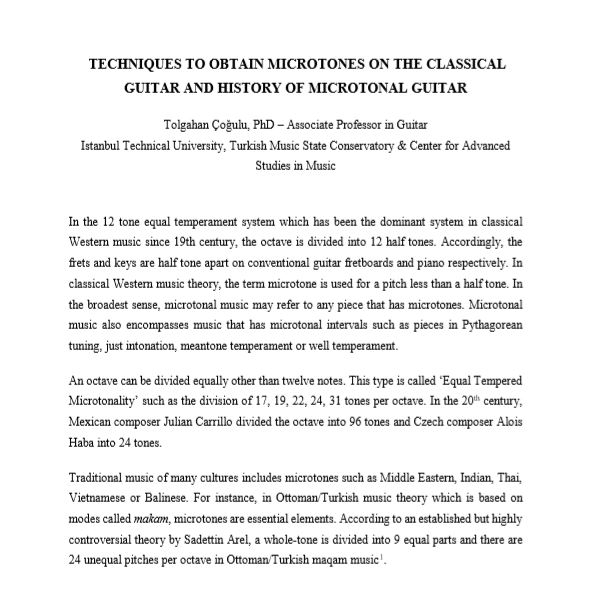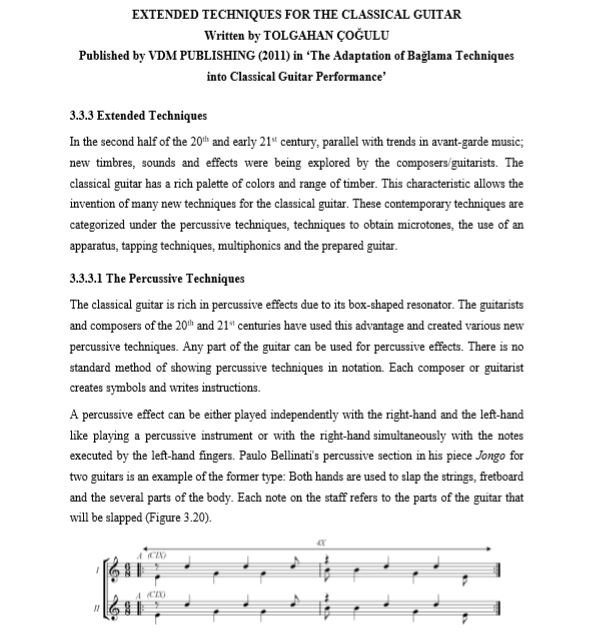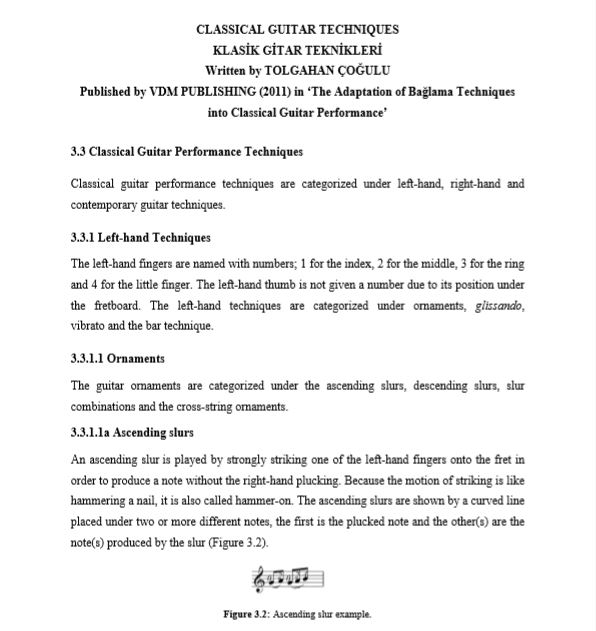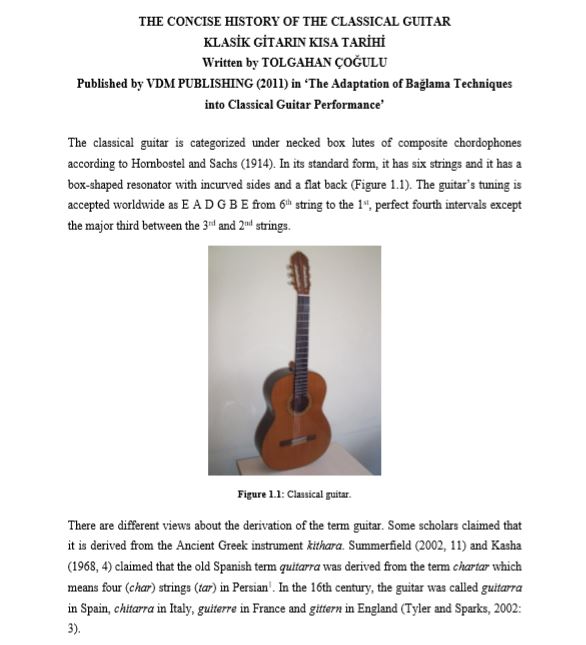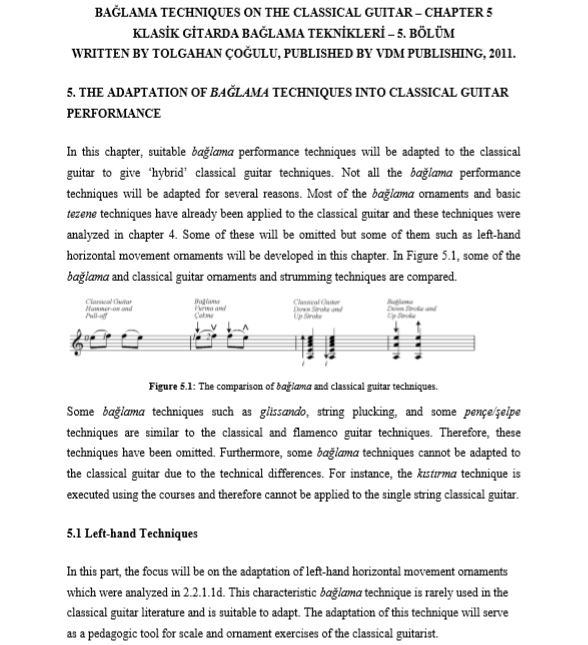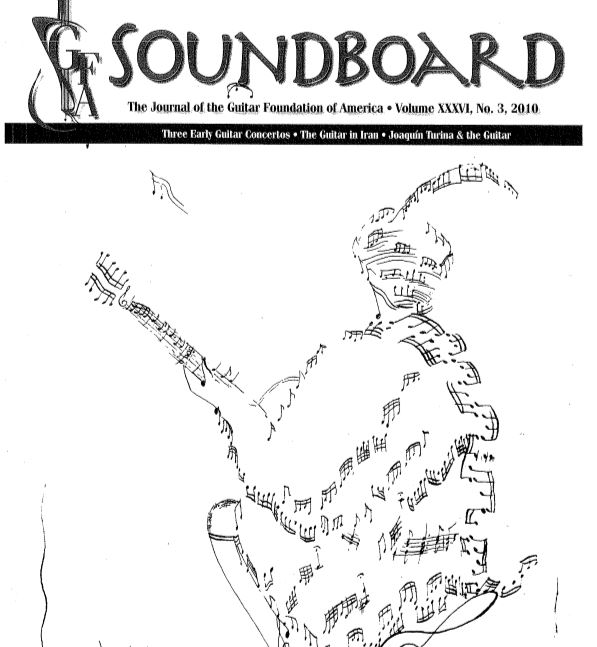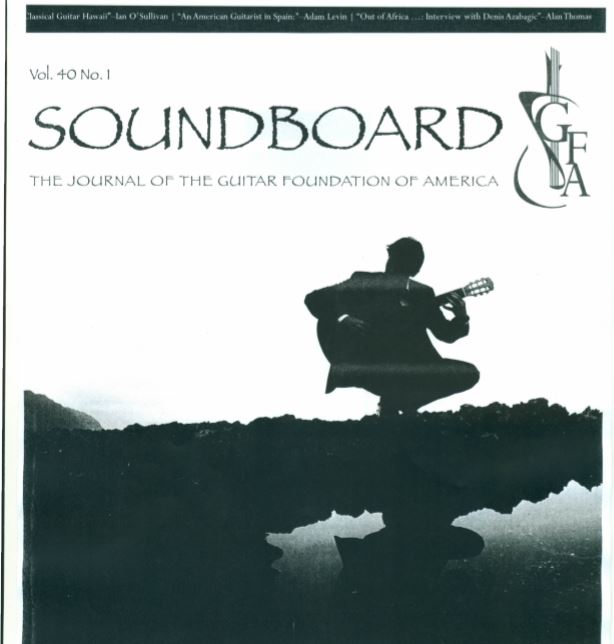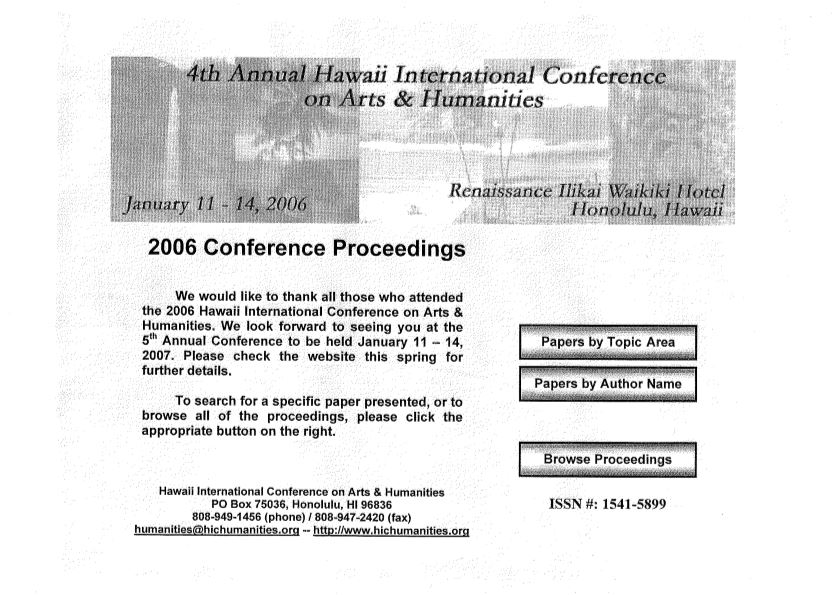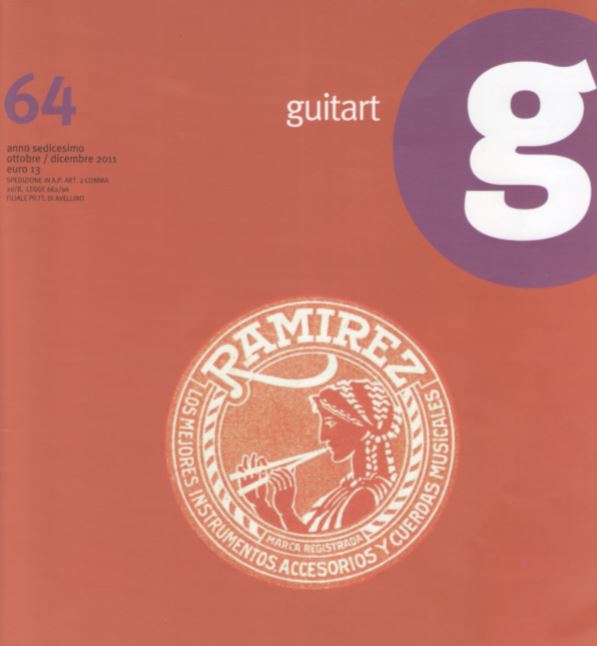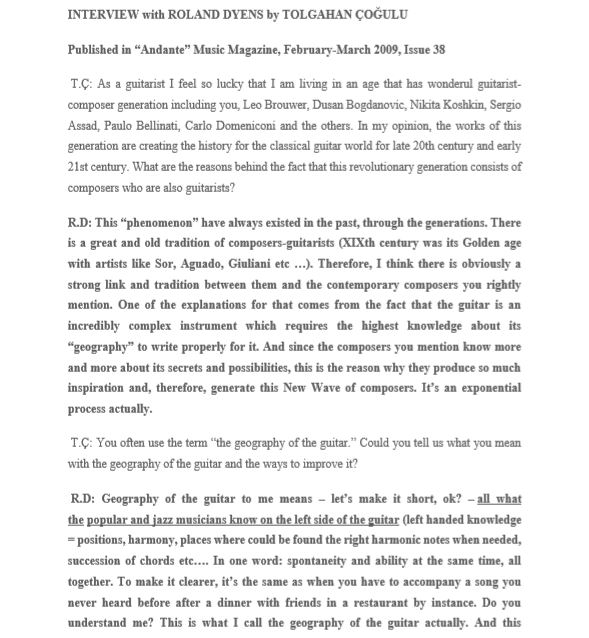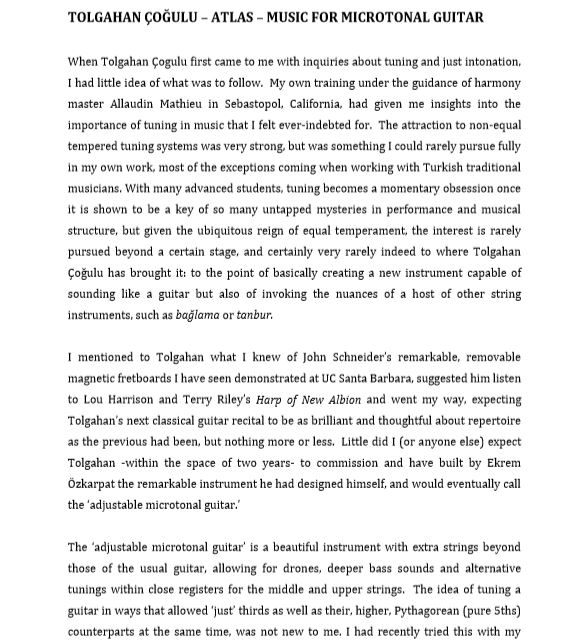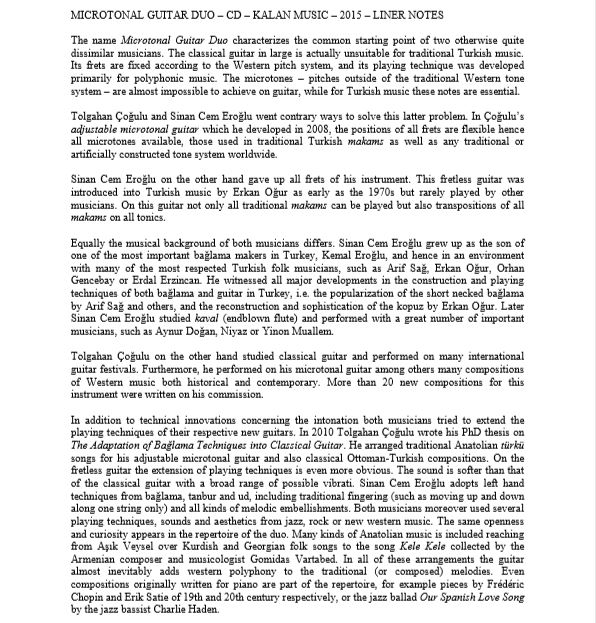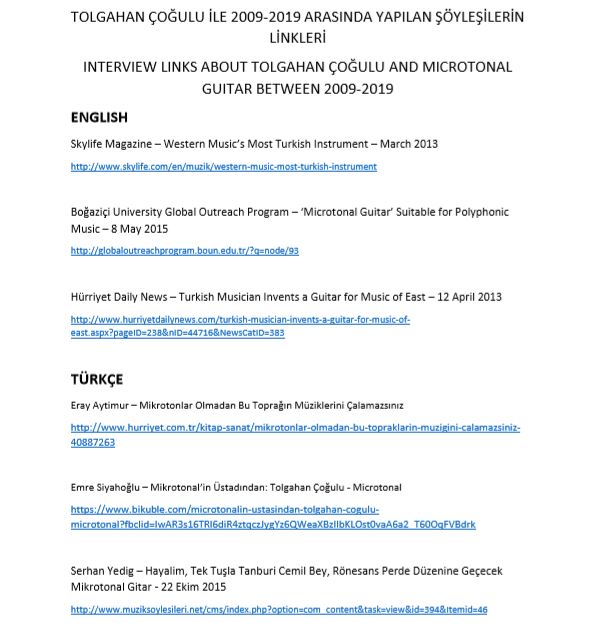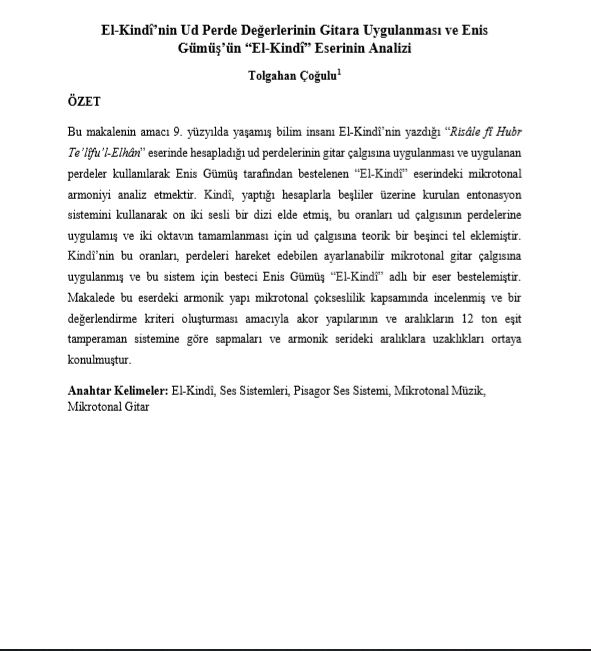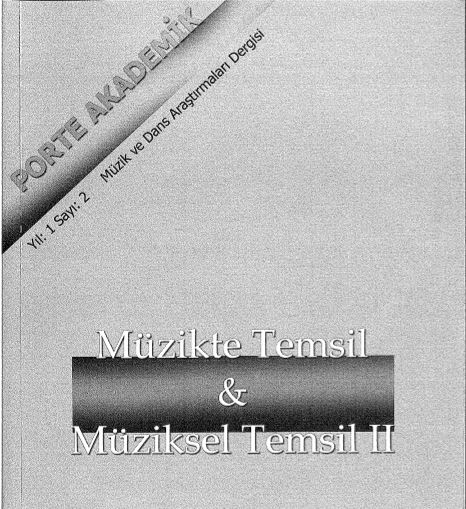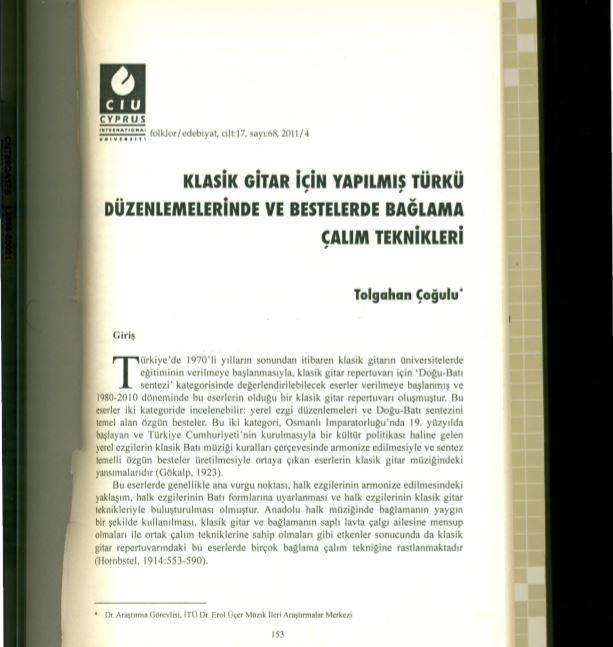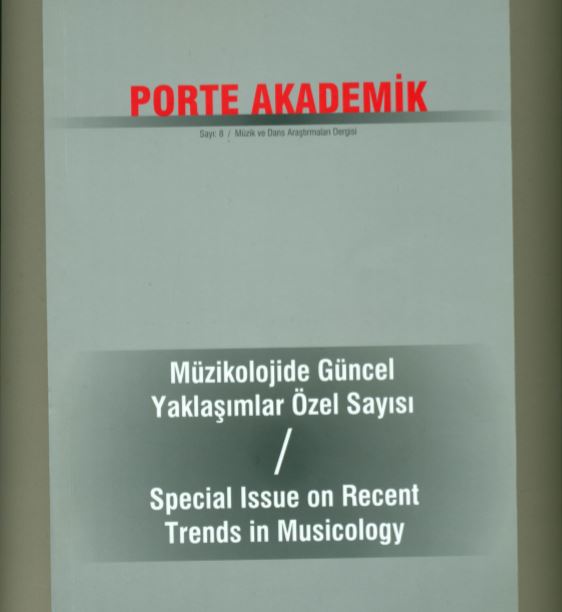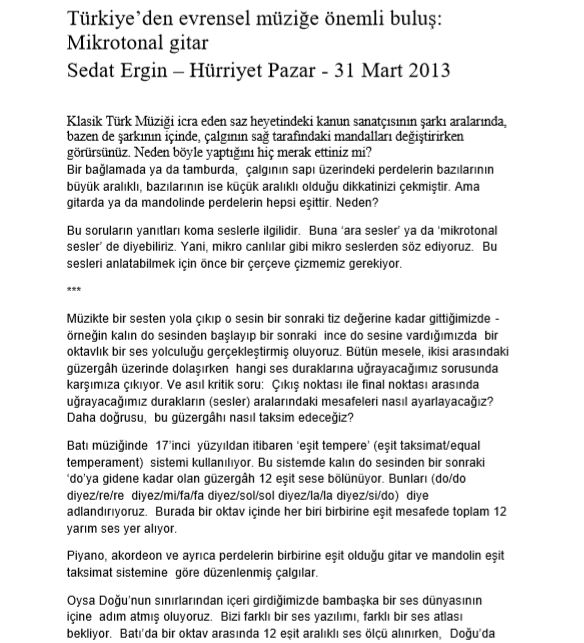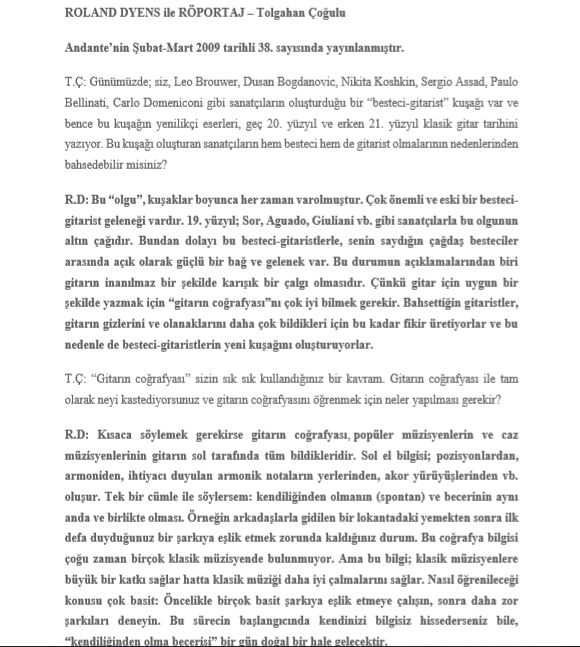"Techniques to Obtain Microtones on the Classical Guitar and Concise History of the Microtonal Guitar" published in "Mikrotöne: Small is Beautiful" by Mackingerverlag, 2019
In the 12 tone equal temperament system which has been the dominant system in classical Western music since 19th century, the octave is divided into 12 half tones. Accordingly, the frets and keys are half tone apart on conventional guitar fretboards and piano respectively. In classical Western music theory, the term microtone is used for a pitch less than a half tone. In the broadest sense, microtonal music may refer to any piece that has microtones. Microtonal music also encompasses music that has microtonal intervals such as pieces in Pythagorean tuning, just intonation, meantone temperament or well temperament.
"Extended Techniques for the Classical Guitar" published by VDM in 2011"
In the second half of the 20th and early 21st century, parallel with trends in avant-garde music; new timbres, sounds and effects were being explored by the composers/guitarists. The classical guitar has a rich palette of colors and range of timber. This characteristic allows the invention of many new techniques for the classical guitar. These contemporary techniques are categorized under the percussive techniques, techniques to obtain microtones, the use of an apparatus, tapping techniques, multiphonics and the prepared guitar.
"Classical Guitar Techniques"
Classical guitar performance techniques are categorized under left-hand, right-hand and contemporary guitar techniques. The left-hand fingers are named with numbers; 1 for the index, 2 for the middle, 3 for the ring and 4 for the little finger. The left-hand thumb is not given a number due to its position under the fretboard. The left-hand techniques are categorized under ornaments, glissando, vibrato and the bar technique.
"The Concise History of the Classical Guitar"
The classical guitar is categorized under necked box lutes of composite chordophones according to Hornbostel and Sachs (1914). In its standard form, it has six strings and it has a box-shaped resonator with incurved sides and a flat back (Figure 1.1). The guitar’s tuning is accepted worldwide as E A D G B E from 6th string to the 1st, perfect fourth intervals except the major third between the 3rd and 2nd strings.
"Bağlama Techniques on the Classical Guitar"
The aim of this article is to investigate the means of creating new techniques for the classical guitar by adapting specific techniques typical of the Anatolian long-necked, plucked folk lute with movable frets known as the bağlama or saz. The means of performance and notation of these new techniques are illustrated comprehensively with the related figures, tables and scores in the thesis. Many exercises, etudes and arrangements have been written to teach and improve these techniques.
"Bağlama Techniques in the Classical Guitar Literature" published in Soundboard - Journal of Guitar Foundation of America, Vol 40, No.1, 2014"
Bağlama is an Anatolian (Asia Minor) necked lute, which is plucked with fingers or plectrum. Ancient lutes found in Asia Minor, Middle East, the Caucasus and Asian originated necked lutes are the ancestors of the bağlama. This article is about bağlama techniques in the ciassical guitar literature.
"El-Kindi'nin Ud Perde Değerlerinin Gitara Uygulanması ve Enis Gümüş'ün El-Kindi Eserinin Analizi" Ahenk Müzikoloji Dergisi, Sayı 3, 2018
Bu makalenin amacı 9. yüzyılda yaşamış bilim insanı El-Kindî’nin yazdığı “Risâle fî Hubr Te’lîfu’l-Elhân” eserinde hesapladığı ud perdelerinin gitar çalgısına uygulanması ve uygulanan perdeler kullanılarak Enis Gümüş tarafından bestelenen “El-Kindî” eserindeki mikrotonal armoniyi analiz etmektir. Kindî, yaptığı hesaplarla beşliler üzerine kurulan entonasyon sistemini kullanarak on iki sesli bir dizi elde etmiş, bu oranları ud çalgısının perdelerine uygulamış ve iki oktavın tamamlanması için ud çalgısına teorik bir beşinci tel eklemiştir. Kindî’nin bu oranları, perdeleri hareket edebilen ayarlanabilir mikrotonal gitar çalgısına uygulanmış ve bu sistem için besteci Enis Gümüş “El-Kindî” adlı bir eser bestelemiştir. Makalede bu eserdeki armonik yapı mikrotonal çokseslilik kapsamında incelenmiş ve bir değerlendirme kriteri oluşturması amacıyla akor yapılarının ve aralıkların 12 ton eşit tamperaman sistemine göre sapmaları ve armonik serideki aralıklara uzaklıkları ortaya konulmuştur.
"Mikrotonal Gitar Müziği" Porte Akademik, Sayı 2, 2011"
Mikrotonal Gitar Müziği, 20. yüzyıl ve erken 21. yüzyılda ortaya çıkmış bir müziktir. Bu repertuvarın geç oluşmasının nedeni, standart gitarlarda perdelerin sabit olması ve 12 ton eşit tamperaman sisteme göre ayarlanmasıdır. 20. ve 21. yüzyıllarda yeni gitar tasarımlarıyla farklık akort sistemleri çalınmaya başlanmış ve mikrotonal gitar müziği repertuvarı oluşmaya başlamıştır.
"Techniques to Obtain Microtones on the Classical Guitar and Concise History of the Microtonal Guitar" published in "Mikrotöne: Small is Beautiful" by Mackingerverlag, 2019
In the 12 tone equal temperament system which has been the dominant system in classical Western music since 19th century, the octave is divided into 12 half tones. Accordingly, the frets and keys are half tone apart on conventional guitar fretboards and piano respectively. In classical Western music theory, the term microtone is used for a pitch less than a half tone. In the broadest sense, microtonal music may refer to any piece that has microtones. Microtonal music also encompasses music that has microtonal intervals such as pieces in Pythagorean tuning, just intonation, meantone temperament or well temperament.
"Extended Techniques for the Classical Guitar" published by VDM in 2011"
In the second half of the 20th and early 21st century, parallel with trends in avant-garde music; new timbres, sounds and effects were being explored by the composers/guitarists. The classical guitar has a rich palette of colors and range of timber. This characteristic allows the invention of many new techniques for the classical guitar. These contemporary techniques are categorized under the percussive techniques, techniques to obtain microtones, the use of an apparatus, tapping techniques, multiphonics and the prepared guitar.
"Classical Guitar Techniques"
Classical guitar performance techniques are categorized under left-hand, right-hand and contemporary guitar techniques. The left-hand fingers are named with numbers; 1 for the index, 2 for the middle, 3 for the ring and 4 for the little finger. The left-hand thumb is not given a number due to its position under the fretboard. The left-hand techniques are categorized under ornaments, glissando, vibrato and the bar technique.
"The Concise History of the Classical Guitar"
The classical guitar is categorized under necked box lutes of composite chordophones according to Hornbostel and Sachs (1914). In its standard form, it has six strings and it has a box-shaped resonator with incurved sides and a flat back (Figure 1.1). The guitar’s tuning is accepted worldwide as E A D G B E from 6th string to the 1st, perfect fourth intervals except the major third between the 3rd and 2nd strings.
"Bağlama Techniques on the Classical Guitar"
The aim of this article is to investigate the means of creating new techniques for the classical guitar by adapting specific techniques typical of the Anatolian long-necked, plucked folk lute with movable frets known as the bağlama or saz. The means of performance and notation of these new techniques are illustrated comprehensively with the related figures, tables and scores in the thesis. Many exercises, etudes and arrangements have been written to teach and improve these techniques.
"Bağlama Techniques in the Classical Guitar Literature" published in Soundboard - Journal of Guitar Foundation of America, Vol 40, No.1, 2014"
Bağlama is an Anatolian (Asia Minor) necked lute, which is plucked with fingers or plectrum. Ancient lutes found in Asia Minor, Middle East, the Caucasus and Asian originated necked lutes are the ancestors of the bağlama. This article is about bağlama techniques in the ciassical guitar literature.
"El-Kindi'nin Ud Perde Değerlerinin Gitara Uygulanması ve Enis Gümüş'ün El-Kindi Eserinin Analizi" Ahenk Müzikoloji Dergisi, Sayı 3, 2018
Bu makalenin amacı 9. yüzyılda yaşamış bilim insanı El-Kindî’nin yazdığı “Risâle fî Hubr Te’lîfu’l-Elhân” eserinde hesapladığı ud perdelerinin gitar çalgısına uygulanması ve uygulanan perdeler kullanılarak Enis Gümüş tarafından bestelenen “El-Kindî” eserindeki mikrotonal armoniyi analiz etmektir. Kindî, yaptığı hesaplarla beşliler üzerine kurulan entonasyon sistemini kullanarak on iki sesli bir dizi elde etmiş, bu oranları ud çalgısının perdelerine uygulamış ve iki oktavın tamamlanması için ud çalgısına teorik bir beşinci tel eklemiştir. Kindî’nin bu oranları, perdeleri hareket edebilen ayarlanabilir mikrotonal gitar çalgısına uygulanmış ve bu sistem için besteci Enis Gümüş “El-Kindî” adlı bir eser bestelemiştir. Makalede bu eserdeki armonik yapı mikrotonal çokseslilik kapsamında incelenmiş ve bir değerlendirme kriteri oluşturması amacıyla akor yapılarının ve aralıkların 12 ton eşit tamperaman sistemine göre sapmaları ve armonik serideki aralıklara uzaklıkları ortaya konulmuştur.
"Mikrotonal Gitar Müziği" Porte Akademik, Sayı 2, 2011"
Mikrotonal Gitar Müziği, 20. yüzyıl ve erken 21. yüzyılda ortaya çıkmış bir müziktir. Bu repertuvarın geç oluşmasının nedeni, standart gitarlarda perdelerin sabit olması ve 12 ton eşit tamperaman sisteme göre ayarlanmasıdır. 20. ve 21. yüzyıllarda yeni gitar tasarımlarıyla farklık akort sistemleri çalınmaya başlanmış ve mikrotonal gitar müziği repertuvarı oluşmaya başlamıştır.

